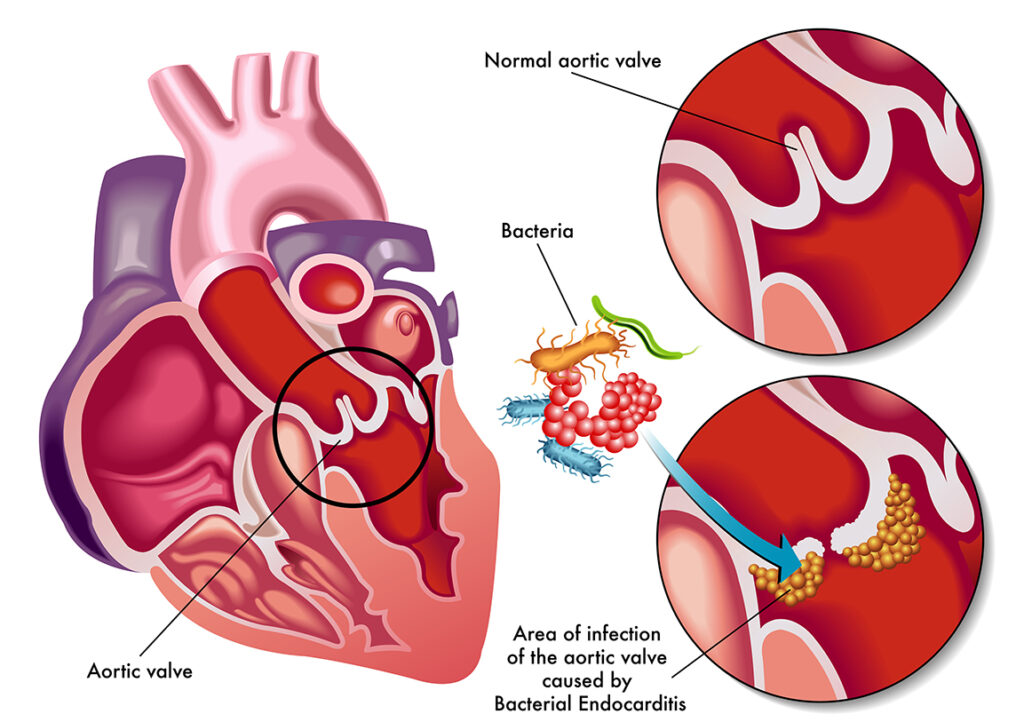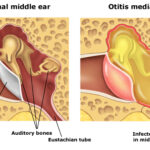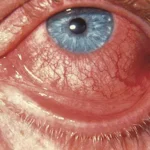What is Bacterial Endocarditis?
Bacterial endocarditis, also known as infective endocarditis, is a life-threatening infection of the endocardium, the inner lining of the heart chambers and valves. This condition occurs when bacteria enter the bloodstream and attach to damaged areas of the heart. Left untreated, bacterial endocarditis can cause severe complications, including heart failure and systemic embolism.

Causes of Bacterial Endocarditis
Common Bacterial Agents
The primary causative organisms of bacterial endocarditis include:
- Staphylococcus aureus: The most common pathogen in acute cases.
- Streptococcus viridans: Often linked to dental infections and procedures.
- Enterococcus species: Associated with infections of the gastrointestinal or urinary tract.
- HACEK organisms: A group of fastidious Gram-negative bacteria, including Haemophilus and Aggregatibacter.
Risk Factors
Individuals with the following conditions are at higher risk:
- Pre-existing heart valve disease
- Prosthetic heart valves
- Congenital heart defects
- History of endocarditis
- Intravenous drug use
- Recent invasive procedures, including dental work
Symptoms of Bacterial Endocarditis
Early Symptoms
- Fever and chills
- Fatigue
- Sweats, especially at night
Advanced Symptoms
- Shortness of breath
- Chest pain
- Swelling in the legs, feet, or abdomen
- Skin changes, including petechiae or Janeway lesions
- New or worsening heart murmurs
Diagnosis of Bacterial Endocarditis
Key Diagnostic Tools
- Blood Cultures: To identify the causative organism.
- Echocardiography: To visualize heart valve vegetations.
- Transthoracic echocardiogram (TTE)
- Transesophageal echocardiogram (TEE)
- Complete Blood Count (CBC): To detect anemia or leukocytosis.
- C-reactive Protein (CRP) and Erythrocyte Sedimentation Rate (ESR): Indicators of inflammation.
Treatment Options
Antibiotic Therapy
The cornerstone of treatment is prolonged antibiotic therapy tailored to the identified organism:
- Empiric Therapy: Initiated before culture results, often using broad-spectrum antibiotics like vancomycin.
- Targeted Therapy: Based on blood culture results and antibiotic susceptibility.
Surgical Intervention
Surgery may be necessary in cases of:
- Severe valve damage
- Persistent infection despite antibiotics
- Recurrent embolism
Prophylactic Antibiotics
Prophylactic antibiotics are recommended for high-risk individuals undergoing invasive procedures such as:
- Dental surgeries involving gum manipulation
- Respiratory tract procedures
- Procedures on infected skin or musculoskeletal tissue
Lifestyle Adjustments
- Maintain good oral hygiene
- Avoid intravenous drug use
- Regular follow-up care for individuals with heart conditions
Complications
- Heart Valve Damage: Leading to valve replacement surgery.
- Stroke and Embolism: Caused by dislodged vegetations.
- Heart Failure: Due to the strain on the heart.
- Abscess Formation: In the heart or other organs.

